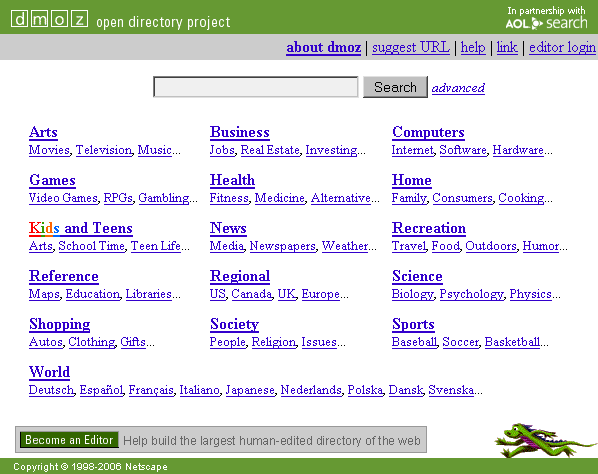DIRECTORIES
Directories usually provide access to pages via topics. Yahoo!, the first commercial topical directory on the Web, popularized the notion of web portals. Unlike site maps, directories may classify content by category. They are also different from indexes, which list terms alphabetically (see the next section). Directories are useful when dealing with mixed types of information without a hierarchical relationship. They are also effective for organizing and linking to external sites.
Category headings are usually arranged alphabetically, with the main topic often shown in a larger font, followed by a few key subtopic links displayed underneath. Clicking a link brings you to a page for that topic. That page displays all links under the topic. In this way, you can drill down into the categories.
DMOZ.com hosts the Open Directory Project (www.dmoz.com). Edited by a team of volunteers around the world, this directory seeks to categorize the Web at large. Positioned front and center on the home page, the DMOZ.com directory shows fifteen top-level categories, each with three key subcategory links (Figure 3-19).

Figure 3-19. The DMOZ directory
Note that the subcategory links under each heading are not alphabetical. Instead, they are prioritized, presumably by their usefulness. An ellipsis after the subcategory links indicates that more links are available.
Get Designing Web Navigation now with the O’Reilly learning platform.
O’Reilly members experience books, live events, courses curated by job role, and more from O’Reilly and nearly 200 top publishers.

